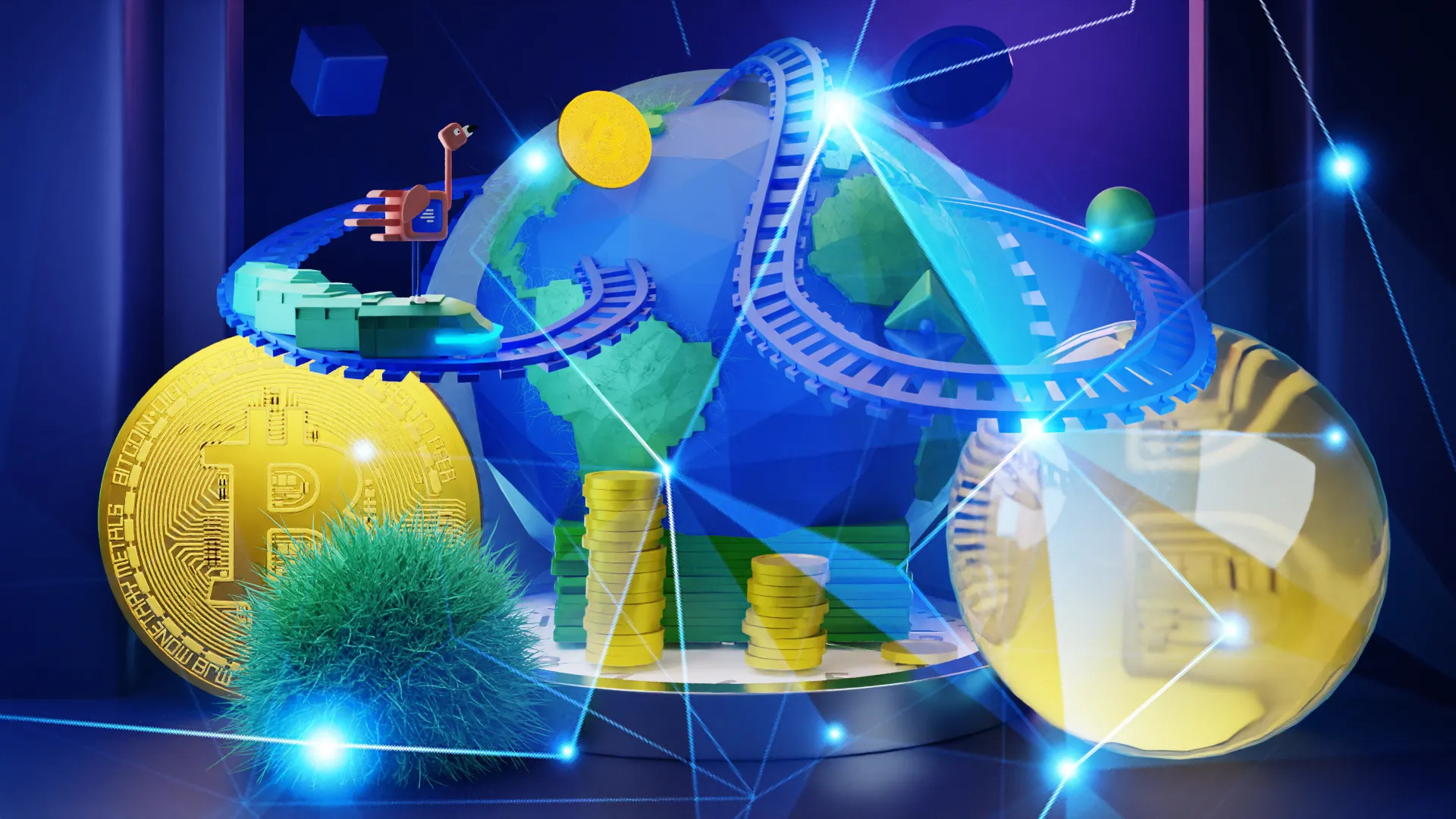
Decentralized Finance, commonly known as DeFi, is revolutionizing the financial landscape by leveraging blockchain technology to create a more transparent, open, and accessible financial system. Various components like asset management, stablecoins, and yield farming contribute to the broader DeFi ecosystem. Unlike traditional financial systems that rely on intermediaries such as banks and financial institutions, DeFi operates on decentralized platforms, offering users unprecedented control over their financial assets and activities. This article delves into the intricacies of DeFi, its benefits, challenges, and future prospects, providing a comprehensive overview of this transformative technology.

DeFi refers to a broad range of financial services that are built on blockchain technology, particularly on smart contract platforms like Ethereum. These services include lending, borrowing, trading, investing, and insurance, all of which are types of financial transactions executed without the need for centralized intermediaries. Smart contracts, which are self-executing contracts with the terms of the agreement directly written into code, play a crucial role in DeFi, ensuring transparency, security, and efficiency.
DEXs allow users to trade cryptocurrencies directly with one another without the need for a central authority. Examples include Uniswap, Sushiswap, and PancakeSwap. These platforms use automated market-making (AMM) algorithms to facilitate trading, providing liquidity and minimizing slippage. Decentralized exchanges use public blockchain networks to conduct transactions without relying on centralized service providers.
Platforms like Aave, Compound, and MakerDAO enable users to lend their crypto assets and earn interest, or borrow assets by providing collateral. These platforms use smart contracts to automate the lending and borrowing process, ensuring transparency and reducing the risk of default.
Stablecoins are cryptocurrencies pegged to stable assets like the US dollar, providing a stable store of value in the volatile crypto market. Examples include Tether (USDT), USD Coin (USDC), and Dai (DAI). Stablecoins are essential for DeFi applications as they provide a reliable medium of exchange and store of value.
Yield farming involves providing liquidity to DeFi protocols in exchange for rewards, typically in the form of additional tokens. Liquidity mining incentivizes users to contribute liquidity to decentralized exchanges or lending platforms, driving growth and adoption of DeFi projects.
DeFi insurance platforms like Nexus Mutual and Cover Protocol offer coverage against risks such as smart contract failures and hacks. These platforms use decentralized pools of capital to provide insurance services, enhancing the security and reliability of DeFi applications.
Asset management protocols in DeFi replicate numerous financial services without the need for intermediaries and centralized platform operators. These protocols are designed to prohibit intervention and manipulation, using smart contracts to ensure the proper execution of rules and transactions.
DeFi provides access to financial services for individuals who are unbanked or underbanked, particularly in regions with limited access to traditional banking infrastructure. By using a smartphone and an internet connection, anyone can participate in DeFi, regardless of their location or financial status.
DeFi transactions are recorded on public blockchains, ensuring transparency and auditability. Smart contracts, which are open-source and verifiable, execute transactions automatically, reducing the risk of fraud and human error. Decentralized systems provide a neutral, transparent, and immutable foundation for financial transactions.
By eliminating intermediaries, DeFi reduces transaction fees and administrative costs. Users can lend, borrow, and trade assets directly with one another, avoiding the fees typically charged by banks and financial institutions. However, it is important to consider the potential risks and limitations of centralized systems, which often rely on intermediaries and institutions.
DeFi platforms are accessible 24/7, allowing users to manage their finances at any time. Additionally, DeFi protocols are often interoperable, meaning they can work together seamlessly, providing a cohesive and integrated financial ecosystem.
DeFi is a hotbed of innovation, with developers continuously creating new financial products and services. The open-source nature of DeFi allows anyone to build on existing protocols, fostering a culture of collaboration and rapid development.
The regulatory landscape for DeFi is still evolving, with different jurisdictions taking varied approaches. Unclear regulations can pose challenges for DeFi projects and users, potentially leading to legal risks and compliance issues. Additionally, the reliance on centralized entities in traditional finance highlights the need for trust in intermediaries, which can be a source of corruption and errors.
While smart contracts offer many benefits, they are also susceptible to bugs and vulnerabilities. Hacks and exploits can result in significant financial losses, undermining trust in DeFi platforms. However, DeFi operates without the involvement of a centralized entity, reducing the risk of corruption and errors.
Many DeFi platforms are built on the Ethereum blockchain, which has faced scalability issues due to high transaction volumes and network congestion. These issues can lead to high gas fees and slow transaction times, limiting the usability of DeFi applications. In contrast, DeFi challenges the traditional centralized financial system by providing open access to a global, decentralized, and peer-to-peer financial system without the need for centralized financial institutions.
DeFi can be complex and challenging for new users to navigate. The user experience often lacks the polish and ease of use found in traditional financial services, which can hinder mainstream adoption.
The crypto market is highly volatile, and DeFi is no exception. Price fluctuations can impact the value of collateral, affect the stability of stablecoins, and create risks for lending and borrowing platforms.

DeFi platforms can facilitate cross-border payments and remittances, offering a faster and cheaper alternative to traditional remittance services. By using stablecoins and decentralized exchanges, users can send money globally with minimal fees and delays.
DAOs are organizations governed by smart contracts and token holders, enabling decentralized decision-making and governance. DeFi projects often use DAOs to manage protocol upgrades, fund allocation, and community initiatives, promoting transparency and inclusivity.
DeFi enables the tokenization of real-world assets, such as real estate, art, and commodities. Tokenization allows for fractional ownership, increased liquidity, and easier transfer of assets, democratizing access to investment opportunities. Distributed ledger technology plays a crucial role in enabling the secure and transparent tokenization of these assets.
DeFi prediction markets, like Augur and Gnosis, allow users to bet on the outcome of future events, from elections to sports games. These markets leverage the wisdom of the crowd to generate accurate predictions and provide valuable insights. Prediction markets also leverage other smart contracts to enhance their functionality and accuracy.
DeFi projects are exploring decentralized identity solutions and alternative credit scoring models. By using blockchain technology, these solutions can provide secure and privacy-preserving identity verification and credit assessments, improving access to financial services.

To address scalability issues, Layer 2 solutions like rollups and sidechains are being developed. These solutions offload transactions from the main blockchain, reducing congestion and lowering fees, making DeFi more accessible and efficient. Additionally, Layer 2 solutions can help mitigate counterparty risk by reducing reliance on centralized intermediaries, thereby enhancing the security and trustworthiness of DeFi transactions.
Interoperability protocols, such as Polkadot and Cosmos, enable different blockchains to communicate and interact with each other. Enhanced interoperability will allow DeFi platforms to leverage the strengths of multiple blockchains, creating a more robust and interconnected financial ecosystem.
As DeFi continues to grow, regulatory frameworks are expected to become clearer and more defined. Increased regulatory clarity will provide a safer environment for DeFi projects and users, fostering greater trust and adoption.
Institutional investors are beginning to recognize the potential of DeFi, leading to increased interest and participation. As institutions enter the DeFi space, they bring additional liquidity, stability, and legitimacy, driving further growth and development.
The lines between DeFi and traditional finance (TradFi) are starting to blur, with partnerships and integrations becoming more common. This convergence can create hybrid financial products that combine the best of both worlds, offering enhanced functionality and accessibility.
DeFi is poised to transform the financial industry by providing more transparent, efficient, and accessible financial services. While challenges and risks remain, the potential benefits of DeFi are significant, offering new opportunities for individuals and businesses alike. As technology and regulations evolve, DeFi is likely to become an integral part of the global financial system, driving innovation and democratizing access to financial services.
By staying informed about the latest trends and developments in DeFi, businesses and individuals can position themselves to take advantage of this revolutionary technology. The future of finance is decentralized, and DeFi is leading the way towards a more inclusive and equitable financial ecosystem.
